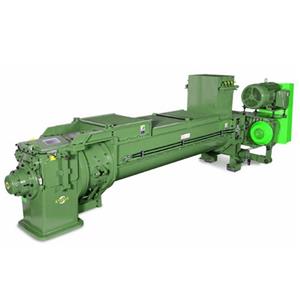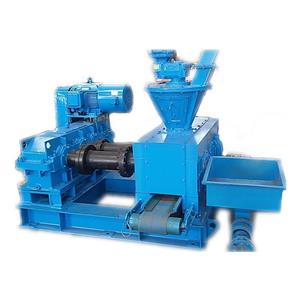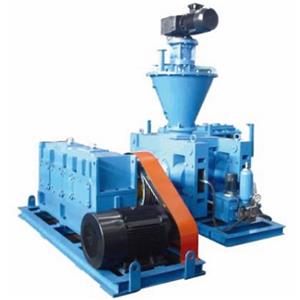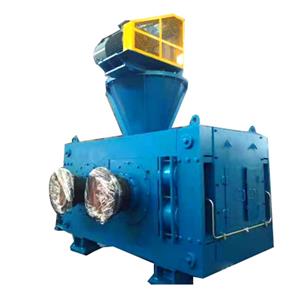-
1811-2025
China's Cellulosic Ethanol Development Path Becomes Clearer
Introduction:With the deepening of the "Dual Carbon" strategy, cellulosic ethanol, as a core direction of second-generation bio-liquid fuels, has regained focus in the energy and chemical industry due to its significant potential in emissions reduction, avoiding competition with food supplies, and waste resource utilization. Through over a decade of technological accumulation and engineering demonstration, China has achieved a series of breakthroughs in core technologies, equipment, and industrial demonstration, moving from the "technology verification" stage to the critical "pre-commercialization" phase.
-
1011-2025
Hydrogen-Ammonia Industry Booms: China Leads the Zero-Carbon New Landscape
As the "green hydrogen-to-ammonia (H2A) - green ammonia-to-hydrogen (A2H)" cycle model proposed in the paper "Research Progress and Prospects of Hydrogen-Ammonia Green Cycle" published in the journal "Chemical Industry Progress" continues to be implemented, China's hydrogen-ammonia green energy industry is experiencing explosive growth. Recently, a series of major developments have emerged one after another: Goldwind Science & Technology plans to invest approximately 18.92 billion yuan in a wind power-to-hydrogen, ammonia and methanol project, the first phase of Envision's Chifeng 1.52 million-ton green ammonia project has been put into production, and Jidian Co., Ltd.'s Da'an green ammonia project has set four global records. These milestones mark that this emerging track, which can solve the problem of hydrogen storage and transportation and promote the decarbonization of traditional industries, has moved from the laboratory to large-scale commercial operation.
-
2710-2025
Resource Recovery Pathways for Oily Sludge Treatment
The efficient and environmentally sound treatment of oily sludge is a critical challenge for the petroleum industry's green transformation. This article systematically reviews the principles and characteristics of mainstream treatment methods, from traditional landfilling and incineration to modern biological and pyrolysis technologies, aiming to provide a clear reference for technology selection within the industry.
-
1310-2025
Core Gear: Tackle Solid Waste/High-Viscosity, Boost Industrial Green Shift
In 2025, with the deepened "dual carbon" policy and upgraded environmental standards, resource utilization of industrial solid waste and harmless treatment of high-viscosity materials have become industry focuses. Per the 2024 White Paper on the Renewable Resources Industry, 32% of SMEs see over 15% raw material loss due to poor sorting accuracy of solid waste equipment, driving urgent demand for high-efficiency, eco-friendly equipment². Against this backdrop, Luoyang Kaizheng Environmental Protection Technology & Equipment Co., Ltd. (hereinafter "Luoyang Kaizheng") offers customized industrial clean production solutions via its three core business segments.
-
0103-2024
Good news: Our company has recognized as a "SRDI" enterprise
Our company has been recognized as a "SRDI Enterprise". We have been focusing on the development of integrated solutions for raw material preparation, batching, solid waste, residual material and recycled material processing. Our goal is to help clients process all kinds of materials more effectively and produce value from them.
-
0707-2023
Rotor-Stator Mixers: From Batch to Continuous Mode of Operation—A Review (3)
Section 6 discussed what this implies when comparing emulsification efficiencies between the two modes of operation. Several different theories have been suggested, but there is of yet no clear consensus in the literature for how continuous mode RSMs should be operated in order to give the same emulsion as in a batch RSM.
-
3006-2023
Rotor-Stator Mixers: From Batch to Continuous Mode of Operation—A Review (2)
This review summarizes and critically compares the current understanding of differences between these two operating modes, focusing on shaft power draw, pumping power, efficiency in producing a narrow region of high intensity turbulence, and implications for product quality differences when transitioning from batch to continuous rotor-stator mixers.
-
1606-2023
Rotor-Stator Mixers: From Batch to Continuous Mode of Operation—A Review (1)
Although continuous production processes are often desired, many processing industries still work in batch mode due to technical limitations. Transitioning to continuous production requires an in-depth understanding of how each unit operation is affected by the shift. This contribution reviews the scientific understanding of similarities and differences between emulsification in turbulent rotor-stator mixers (also known as high-speed mixers) operated in batch and continuous mode.
-
2605-2023
Mixing Performance Prediction of Detergent Mixing Process Based on the Discrete Element Method and Machine Learning (2)
After validating it with experimental test, this model was utilized to study the mixing performance considering the allowable mass fraction range of every formulation component and a mixer speed of 45 rpm, and the dataset generated from this study was employed along with a machine learning algorithm to obtain a model to predict the mixing index. In this sense, twenty-five different combinations of the defined components were simulated and a mixing index of 0.98–0.99 was obtained in a time of 60 s, revealing that all the combinations were completely mixed. In addition, the developed model was validated with results obtained from the DEM model. The model predicts the mixing index in advance and with accuracy.
-
1905-2023
Mixing Performance Prediction of Detergent Mixing Process Based on the Discrete Element Method and Machine Learning (1)
The DIY approach promotes small-scale digital manufacturing for the production of customized, fast moving consumer goods, including powder detergent. In this context, a machine was developed to manufacture a customized detergent according to the needs of the clients indicated on a digital platform connected to the machine. The detergent is produced by a mixing process of the formulation components carried out in a 3D mixer. Analysing the mixing performance of the process is essential to obtain a quality product. In this study, the mixing process of the powder detergent was modelled using the discrete element method.




